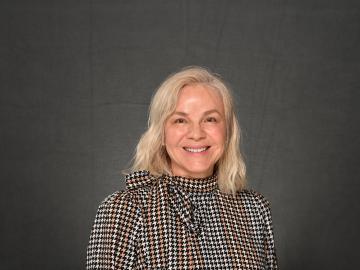Filter News
Area of Research
- (-) National Security (24)
- (-) Neutron Science (20)
- (-) Supercomputing (29)
- Advanced Manufacturing (3)
- Biological Systems (2)
- Biology and Environment (62)
- Building Technologies (1)
- Chemistry and Physics at Interfaces (1)
- Clean Energy (124)
- Computational Engineering (1)
- Computer Science (2)
- Data (1)
- Electricity and Smart Grid (1)
- Energy Frontier Research Centers (1)
- Energy Sciences (2)
- Functional Materials for Energy (3)
- Fusion and Fission (20)
- Isotope Development and Production (1)
- Isotopes (14)
- Materials (101)
- Materials Characterization (2)
- Materials for Computing (4)
- Materials Synthesis from Atoms to Systems (1)
- Materials Under Extremes (2)
- Nuclear Science and Technology (13)
- Quantum information Science (1)
- Renewable Energy (1)
- Sensors and Controls (1)
- Transportation Systems (2)
News Type
News Topics
- 3-D Printing/Advanced Manufacturing (3)
- Advanced Reactors (2)
- Artificial Intelligence (5)
- Big Data (2)
- Bioenergy (2)
- Biology (3)
- Biomedical (1)
- Buildings (1)
- Chemical Sciences (1)
- Climate Change (4)
- Computer Science (12)
- Coronavirus (1)
- Cybersecurity (8)
- Decarbonization (1)
- Energy Storage (3)
- Environment (4)
- Exascale Computing (4)
- Frontier (4)
- Fusion (2)
- Grid (2)
- High-Performance Computing (10)
- Isotopes (1)
- Machine Learning (4)
- Materials (7)
- Materials Science (6)
- Microscopy (1)
- Molten Salt (1)
- Nanotechnology (4)
- National Security (14)
- Neutron Science (14)
- Nuclear Energy (4)
- Partnerships (1)
- Physics (3)
- Quantum Computing (1)
- Quantum Science (3)
- Security (4)
- Simulation (4)
- Software (1)
- Space Exploration (1)
- Summit (1)
- Sustainable Energy (3)
- Transportation (2)
Media Contacts

Hilda Klasky, a research scientist in ORNL’s Computing and Computational Sciences Directorate, has been named a fellow of the American Medical Informatics Association.

Researchers used the world’s first exascale supercomputer to run one of the largest simulations of an alloy ever and achieve near-quantum accuracy.

Hilda Klasky, an R&D staff member in the Scalable Biomedical Modeling group at ORNL, has been selected as a senior member of the Association of Computing Machinery, or ACM.

Mike Benson has spent the last 10 years using magnetic resonance imaging systems — much as you find in a hospital — to understand the fluid dynamics of flows around objects and even scaled replicas of cities. He aims to apply MRI scanning to

The Exascale Small Modular Reactor effort, or ExaSMR, is a software stack developed over seven years under the Department of Energy’s Exascale Computing Project to produce the highest-resolution simulations of nuclear reactor systems to date. Now, ExaSMR has been nominated for a 2023 Gordon Bell Prize by the Association for Computing Machinery and is one of six finalists for the annual award, which honors outstanding achievements in high-performance computing from a variety of scientific domains.

Mike Huettel is a cyber technical professional. He also recently completed the 6-month Cyber Warfare Technician course for the United States Army, where he learned technical and tactical proficiency leadership in operations throughout the cyber domain.

After completing a bachelor’s degree in biology, Toya Beiswenger didn’t intend to go into forensics. But almost two decades later, the nuclear security scientist at ORNL has found a way to appreciate the art of nuclear forensics.

Ken Herwig's scientific drive crystallized in his youth when he solved a tough algebra word problem in his head while tossing newspapers from his bicycle. He said the joy he felt in that moment as a teenager fueled his determination to conquer mathematical mysteries. And he did.

When opportunity meets talent, great things happen. The laser comb developed at ORNL serves as such an example.

At the National Center for Computational Sciences, Ashley Barker enjoys one of the least complicated–sounding job titles at ORNL: section head of operations. But within that seemingly ordinary designation lurks a multitude of demanding roles as she oversees the complete user experience for NCCS computer systems.




